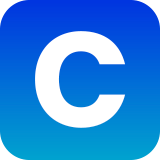Nothing significant in the technical world can come to fruition without an institutionalized process. It takes time to build and optimize a process with perhaps a multitude of trials and errors that eventually results in understanding what works best. This approach applies accurately to the software development process that often must evolve if it is to become a pillar of your company's success.
A major part of your process will almost certainly be the tools you select for managing the entire software development cycle. To say that choosing the right project management tools will enable a successful process is by no means an understatement.
In this post, we will review the tools deemed best for managing digital product development. The goal here is to discern a few important tools that can enhance your overall development cycle and increase your team's productivity. But before listing these tools, let's explore what product management tools are and why they are essential for your software development process.
What Are Product Management Tools?
These are desktop programs or mobile applications that your development team uses to carry out various stages of their project, including analysis, planning, programming, monitoring, and all other activities related to the development lifecycle.
These tools are accessible to all the individuals who are part of your team, working in collaboration. This helps to ensure that everyone is aware of what tasks are lined up and in what direction the process is flowing. The project plan and scope of work you share through these tools provide a roadmap, guiding members with their role and progress in the project. The management and monitoring of activities become seamless by incorporating the right tools, resulting in a faster and efficient product release with minimal to no errors.
Furthermore, their usage becomes indispensable if the team is located in different geographical positions or operating remotely.
Why are Management Tools essential in Software Development?
Project management tools offer a direction and breakdown of the entire project into different phases. This way, a hierarchy is established, and everyone becomes aware of what is on priority, which tasks need execution first, and how they are dependent on each other.
With that, project management becomes easy for the team lead and project manager, saving time and mitigating risks.
There are several project management tools available in the market. We will list down those currently used by software development companies.

